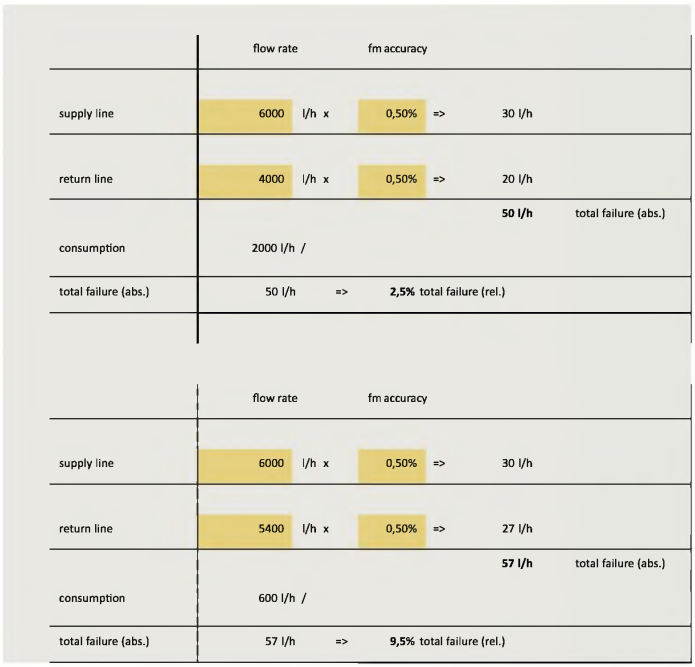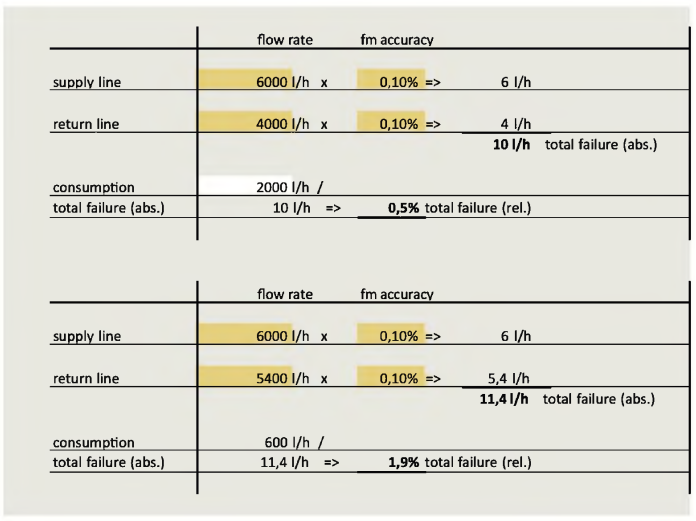
Ship Science & Technology - Vol. 17 - n.° 33 - (43-49) July 2023 - Cartagena (Colombia)
DOI: https://doi.org/10.25043/19098642.241
Christoph Matt1
1 KRAL GmbH, Bildgasse 40, Industrie Nnrd, 6890 Lustenau, Austria. Email: c.matt@kral.at
Date Received: October 9th, 2022 - Fecha de recepción: 09 de octubre de 2022
Date Accepted: February 28th, 2023 - Fecha de aceptación: 28 de febrero 2023
The paper discusses the challenges in performing an accurate fuel consumption measurement and the various factors that affect it. Based on an empirical pressure measurement carried out on a cargo ferry by KRAL engineers, ways to improve measurement accuracy are identified.
Key words: Fuel Consumption, Measurement Accuracy, Influencing Factors.
Este documento analiza los desafíos para realizar una medición precisa del consumo de combustible y los diversos factores que la afectan . Sobre la base de una medición de presión empírica realizada en un transbordador de carga por los ingenieros de KRAL, se identifican formas de mejorar la precisión de la medición.
Palabras claves: Consumo de combustible, Precisión de la medición, Factores que influyen.
The accuracy of a fuel consumption measurement depends on many different factors, which result in a number of challenges while performing a measurement.
This white paper explains fuel consumption measurement in the supply and return lines of a fuel consumption device, also known as differential measurement.
In addition to the precision of the individual measuring devices, external influences also affect the accuracy of the measurement result. These include temperature differences between the supply and return lines, fuel pulsations, pipe vibrations and air bubbles in the liquid.
For many fuel consumption devices (engines, generators, boilers, etc.) in industrial and commercial plants operated with diesel or heavy oil, as well as for vehicles (construction machinery, trucks, locomotives, etc.), the fuel is supplied by circulation (Fig. 1).
Fig. 1. Wiring diagram differential measurement.
Fuel consumption is determined using the following formula:
supply flow — return flow = consumption
The difference between the forward and return flowmeters gives the consumption, hence the term differential measurement. The flow rate in the circulation is usually about three to four times higher than the actual consumption itself. This procedure is chosen to ensure a permanent supply of fuel. In addition, the appropriate quality of fuel must be prepared to ensure optimum combustion.
There are flowmeters in both the supply and return lines for measuring the differential.
The measuring errors of both measuring devices cannot simply be added together to determine the total measuring error. From a physical point of view, the individual measurement error must be related to the actual consumption value (Fig. 2 and Fig. 3).
Fig. 2. Calculation of system accuracy (measuring device accuracy 0.5 %).

Even if other influencing factors have not yet been taken into account, a system error of 2 % can quickly occur with an accuracy of, for example, 0.5 % of the individual measuring devices. The error size depends on the ratio of the flow in the supply and return lines to consumption. The greater the difference, the greater the error. At full load, accuracy in the system is about 2.5 %, while at low load the measurement error can be up to 10 %.
If, however, measuring devices with an accuracy of, for example, 0.1 % are used for the same flow rates, the total measuring error at full load is significantly reduced to 0.5% or to just under 2 % at low load.
Another factor influencing system accuracy is a potential temperature difference of the liquid in the supply and return lines. Especially when measuring the consumption of diesel oil in engines and generators, the temperature in the return line is often higher than in the supply line. The fuel heats up at the consumption device and can be up to 30 °C higher than in the supply line. Since fuel expands when heated, the volume of the liquid changes as a result. In order to avoid additional measurement errors, these temperature and volume differences must be corrected.
The density table (Table 1) clearly shows that a temperature difference of 20 °C for light or heavy oils already produces a density error of about 1.5 %. If the temperature difference is not taken into account, an incorrect density value is assumed for the measurement, which affects the volume value and thus influences the accuracy of the measured value of the individual measuring device. The measurement error caused by the temperature difference is added to the measurement error of the flowmeter. The measuring error of a single measuring point alone has a considerable effect on system accuracy (Fig. 2 and Fig. 3).
Table 1. Density table light fuel oil (LFO) and heavy fuel oil (HFO) (DIN 51757, method B).
Example calculation using Fig. 3, calculation example with 0.1 % accuracy of the measuring device:
If the liquid is operated at ambient temperature (20 °C) and the consumption device heats it up in the return line to 40 °C, this leads to a ΔΤ of 20 °C.
According to the density table for fuels (Table 1), the flow rate in this example increases from 4,000 1/h to 4,064 1/h light oil (LFO) in the return line.
4,000 1/h X 1.5 % = 4,060 1/h.
(see Eq. 1: 906.5 kg/m3 at 20 °C I 892.5 kg/m3 at 40 °C LFO).
This reduces consumption from the original 2,000 1/h to 1,940 1/h (6,000 1/h minus 4,060 1/h). The uncorrected consumption value of 1,940 1/h corresponds to an additional measurement error of 3.0 % (2,000 1/h 1 1,940 1/h = 60 1/h « 3.0 %).
Fuel does not always flow smoothly and evenly through lines and flowmeters. In a complex piping system with pumps, motors and valves, pressure surges and pulsations inevitably occur within the liquid, either temporarily or permanently. Pulsations can occur, for example, when fuel is injected into the combustion chamber of an engine. But even pumps without a uniform pumping capacity or the closing of a valve produce pulsations.
When fuel meets resistance, it compresses. When it expands again, pulsations occur. Such pressure surges cause backflows in the liquid. If these backflows are not taken into account in the flow measurement, an additional measurement error occurs.
An empirical pressure measurement to determine the pressure peaks and backflows in a fuel line (circulation line with differential measurement) on a freight ferry has shown the following:
The ferry has two independent fuel systems. One is on the starboard side, the other on the port side. Each has two main engines, one system has two generators, the other only one generator (Fig. 4).
Fig. 4. P & I - Fuel system diagram.
At a system pressure of 6 to 7 bar, pressure peaks above 12 bar were sometimes measured. These occurred at extremely short intervals (" 0.5 ms) within a period of 60 to 80 ms and then repeated at cyclic intervals of about 200 to 250 ms.
In this case, six directional changes were detected within the cycle of approx. 60 ms, which could also be quantified volumetrically (Fig. 5: time period between 0.22 s and 0.30 s).
Fig. 5. Measured data for forward flowmeter.
The flow rate here is three times less than 0 1/h, which illustrates and substantiates the backflows in the system. In this example, an error of 12.53 % was calculated on the basis of the backflows generated (Fig. 6):
Fig. 6. Evaluation of volumetric measurement data.
This error value is unusually high and is due, among other things, to the complex piping system with two main motors and three generators. Another cause was a feed pump which, due to wear, was at less than half capacity (according to the type plate). The amount of backflow depends on the design of the fuel system and the components installed in it. Even in a simple system with only one main motor, backflows of up to 5% occur.
Often only very low pulsations occur during initial commissioning with new components. Due to wear and tear of the components installed in the fuel system, the danger of pulsations and thus of backflows increases continuously and can lead to significant false measurements.
The use of motors, pumps and valves creates vibrations that spread throughout the entire piping system. Vibration-proof sensors in the flowmeter help to avoid measurement errors.
Electronic measuring systems (e.g. Coriolis, ultrasound, etc.), on the other hand, react much more sensitively to vibrations. The measuring principle of the Coriolis is based on an oscillation in the measuring line generated by the measuring device itself. If this oscillation frequency is the same or similar to the vibration frequency of the pipeline, the measurement result is distorted.
In an ultrasonic measuring device, the sound waves from the transmitter to the receiver are deflected by the vibration and thus also influence the measurement result of the consumption device.
The fuel system is usually a closed system that eliminates air bubbles at an early stage. In some applications, however, air bubbles from the motor get into the return line and thus influence the accuracy of the measurement result. This problem occurs above all with mechanical measuring principles.
In order to achieve the highest possible system accuracy, the best suited measuring principle must be determined. Considering the following parameters can improve the results of the measurement.
The accuracy of the individual flowmeters has a significant influence on the system accuracy and thus the consumption value of the consumption device. In order to minimize overall errors in differential measurement, the accuracy and reproducibility of the measuring devices must be taken into consideration.
The example calculation has shown that a temperature compensation is absolutely necessary for a differential measurement without pipe trace heating (which keeps the temperature constant). Even during operation with trace heating, a temperature difference of up to 10 °C between flow and return flow can quickly occur.
Flowmeters must measure both flow directions in order to quantify and compensate for backflows.
Electronic measuring methods (e.g. Coriolis, ultrasound, etc.) are indirect measuring principles. They measure the oscillation of the measuring tube or the speed of sound in the liquid and convert the result into the flow rate. These measuring principles function very reliably under normal application conditions. Due to their inertia, however, they cannot detect or only barely detect pressure surges, as our example shows.
Mechanical measuring methods (so-called displacement meters) record the volume of the liquid directly and largely without delay. The measuring principle must be selected in such a way that vibrations have no influence on the measuring result.
Air bubbles can be eliminated with air separators. In addition, the correct positioning of the measuring device must be ensured.
System accuracy when measuring fuel consumption with differential measurement is a challenge because it is influenced by many factors. Some of them are not evident at first glance. If these influences are not taken into account, the measurement error of the system can accumulate up to a value of 20 % and thus lead to incorrect consumption values.
Here, once again, the factors that influence system accuracy in a differential measurement are ranked according to their importance:
If all factors are taken into account, you can rely on the accuracy of the consumption values.